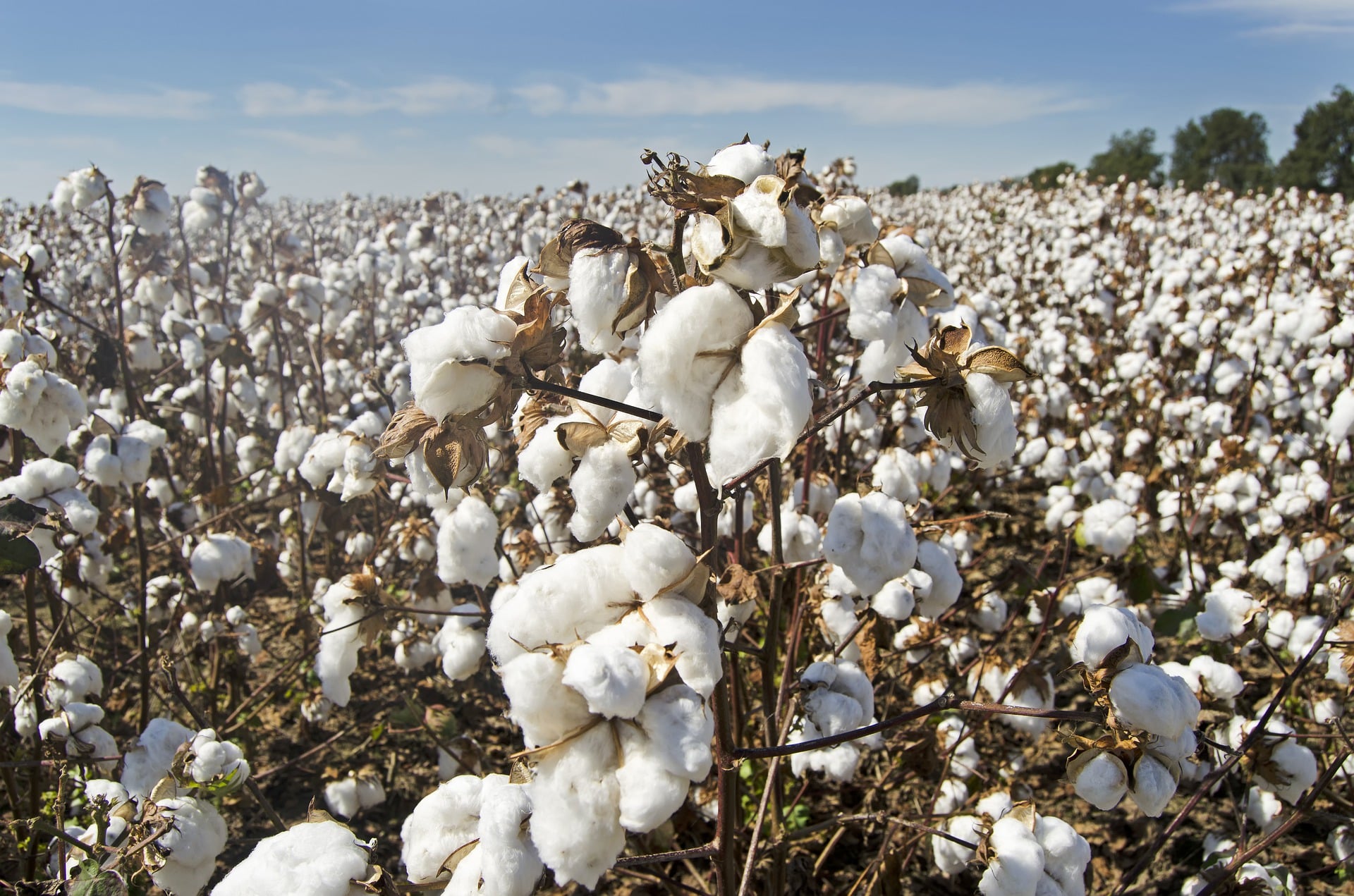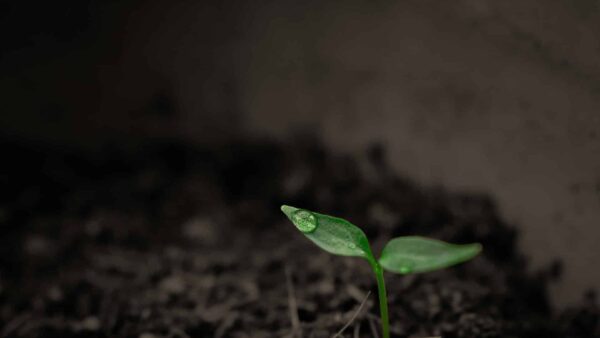Clemson researcher Chris Saski admits sending the University’s iconic Tiger Paw to space aboard a SpaceX Dragon spacecraft is, quite literally, “an out-of-this-world experience.”
But it’s the potential for the experiments in the flight hardware to which the Paw is attached that truly excites him.
Saski’s cotton regeneration research, adorned with Clemson stickers, intends to take off Dec. 21 from NASA’s Kennedy Space Center in Florida bound for the International Space Station (ISS). Upon arrival, Saski’s research project titled “Unlocking the Cotton Genome to Precision Genetics” will be conducted in microgravity with the goal of facilitating the ability to directly edit the genome of elite cotton varieties, quickly adding traits like disease resistance or drought tolerance without the need for the lengthy conventional breeding process that can take over a decade.
“Understanding gene function and subsequent genome engineering technology has the potential to change the lives of everyone and everything on the planet,” said Chris Saski, associate professor of systems genomics in Clemson’s Department of Plant and Environmental Sciences.
With no solution yet in place to satisfy a growing demand for fuel, food and fiber as the global population continues to expand, Saski believes this research “is a large step in the right direction” toward solving that problem.
“Conducting these experiments in microgravity gives us a unique environment to disentangle the genetics of somatic embryogenesis — regenerating a whole plant from a single cell — and we believe we can translate this research into application,” he said. “This project will lead to new understanding of the genes involved. As we understand it now, this genetic program is encoded in all crop genomes, but it is suppressed. This research could ultimately allow us to switch on this genetic program in other crops and be able to do genome editing and engineering more readily and directly on commercial varieties … and eventually provide an accelerated path to food, fuel and fiber for a growing population of people on Earth.”
Food for thought … or living on another planet
But if potentially addressing issues such as global hunger wasn’t enough, the possibilities go far beyond, said Saski, who admitted he never imagined space missions would one day be part of his work.
“When I started my position as a researcher here at Clemson, I quickly realized that there really are no boundaries to the questions that one can ask,” he said. “I just created a vision, worked hard and tried to set the bar high. I envision that translation of this research into application could enable deep space exploration missions, it could allow for plants to be stored as single cells and you could store and supply a diversity of plant species for astronauts that are doing research or even living on another planet.”
Broadly, the project seeks to explore the cotton genome and how it reacts in microgravity and normal gravity. It was selected as a winner in the Cotton Sustainability Challenge, which was run by the Center for the Advancement of Science in Space (CASIS) and funded by Target Corporation, providing researchers and innovators the opportunity to propose solutions to improve crop production on Earth by sending their concepts to the ISS U.S. National Laboratory. CASIS is the organization tasked by NASA to manage the ISS National Lab.
One of Saski’s collaborators is Jeremy Schmutz, faculty investigator at HudsonAlpha Institute for Biotechnology since 2008, who said the project aims to understand how callus cells divide and regenerate in space and how this affects the quality of transformed cells.
“We have shown that cotton has very little diversity as a species, which greatly limits the possibilities of improving the sustainability of cotton through traditional breeding techniques,” Schmutz said. “Accelerating the speed at which we can transform cotton opens up the ability to rapidly test genes linked to beneficial traits and also make positive targeted modifications in important cotton lines for U.S. growers and the many industries that depend on high-quality cotton production.”
Embryogenesis in microgravity
Conventional breeding process currently takes more than a decade
And why does conducting research in microgravity make a difference?
Microgravity is the condition in which people or objects appear weightless. Plants have evolved at a force of 1g — the force of gravity on Earth, responsible for things such as keeping our feet planted firmly on the ground — but without that force, or in microgravity, there can be a drastic effect on gene expression.
Studying developmental programs like embryogenesis in microgravity allows us to disentangle what genes are involved by comparing experiments on the ISS and on Earth, according to Saski.
“Our experiment is aimed at understanding the genetic architecture and coordination of embryogenesis,” he said. “Understanding this program could facilitate the ability to directly edit the genome of elite breeding germplasm, adding traits such as disease resistance or drought tolerance without the need for the long conventional breeding process.”
Don Jones, director of Breeding, Genetics and Biotechnology at Cotton Incorporated, echoed Saski’s sentiment that this understanding could be a direct and immediate benefit of sending the project to space — but said the potential for longer-term benefits is also vast.
“Past space exploration has resulted in benefits for all of humanity that oftentimes far exceeds the expectations of those who were conducting the initial research. … Conventional breeding now takes at least a decade to deliver improved varieties to cotton growers that can withstand drought and disease, both of which will increase with climate change,” Jones said. “Understanding and improving embryogenesis will allow such varieties to be developed significantly faster, and when the payoff is faster, more companies and institutions become interested in investing real dollars into cotton research with a shortened payoff time horizon.”
Low Earth Orbit: Falling around the planet
The effects of microgravity can be seen when astronauts and objects float in space. But the prefix “micro-” means “very small,” not nonexistent, so microgravity refers to the condition where gravity seems to be very small.
The ISS operates in Low Earth Orbit (LEO) or about 200 to 250 miles high. At that height, Earth’s gravity is still very strong, thus a person who weighs 100 pounds on the ground would weigh 90 pounds there.
Earth’s gravity pulls objects, including the space station, toward its surface. As a result, the ISS is constantly falling toward Earth. But the station also is moving very fast — so fast it matches the curve of the Earth’s surface.
“If you throw a baseball, gravity will cause it to curve down; it will hit the ground soon,” Saski said. “A spacecraft in orbit moves at the right speed so that the curve of its fall matches the curve of Earth. For the space station, that speed is 17,500 miles per hour. The spacecraft keeps falling toward the ground but never hits it. Instead, it falls around the planet. The moon stays in orbit around Earth for this same reason.”
For the purposes of this research, however, that difference between 1g gravitational force and microgravity can have a significant effect.
“Microgravity is a different environment — it’s different from the Earth,” said Saski. “Plants, for example, have been adapted in Earth’s 1g gravitational pull. Now we live in an era when we have unprecedented technological capabilities, and we can study things in adverse environments like microgravity to help understand the genetics underlying certain developmental programs or traits.”
Saski and Clemson postdoctoral research scientist Sonika Kumar are studying plant cells analogous to human stem cells; in this case, plants cells that are not de-differentiated — not a certain part of the plant — allowing for complementary experiments to disentangle the genetic architecture of somatic embryogenesis.
That disentanglement would enable scientists to “turn on” this programming in other crops and do genome editing and genome engineering more readily. The potential, then, is for growers to feed a growing and expanding population of people on Earth.
“Genetic and epigenetic changes control the process of somatic embryogenesis,” Kumar said. “Discovering the mechanism and genetic factors behind somatic embryogenesis will open new avenues to stimulate the cellular reprogramming of somatic embryogenesis that will be helpful in fast delivery of cotton varieties having a combination of multiple traits like excellent fiber quality, climate resilience and tolerance to biotic and abiotic stresses. This project with the objective of cotton sustainability challenge will improve the social and economic development of growers, stakeholders and industries.”
Power of the Paw
As for the Tiger Paw, Saski said the ISS-required custom flight and operations hardware — the payload that will be aboard the SpaceX Dragon spacecraft — looked largely bare and boring in its original state.
Mission Director Dave Reed and his team at Techshot, a company recently acquired by space infrastructure company Redwire, are converting Saski’s experiments into a payload for space travel and designing the operational hardware — they are also responsible for putting the Clemson stickers on the flight hardware.
The evolution from scientific proposal to spaceflight is typically referred to as “payload development,” and the Redwire payload development team has the challenging task of merging the scientific investigation with the capability of spaceflight hardware and the constraints of resources such as upmass, astronaut time and cold stowage return of harvested material.
“On behalf of our whole payload development team, we are proud to be supporting this exciting investigation that promises to yield new discoveries for the benefit of life on Earth,” Reed said. “Much of our work on ISS is about exploring how microgravity can positively impact industries, people and systems back on Earth, and this investigation supports this mission.”
Saski’s project represents the first time that a plant tissue culture experiment will be performed on orbit in NASA’s Advanced Plant Habitat, which is designed to provide sunlight-strength illumination in order to grow plants such as radishes, peppers and tomatoes.
“Plant tissue culture requires very, very low ‚Äòdaytime‚Äô light levels, just enough to maintain a circadian rhythm in the culture and a tiny fraction of what Plant Habitat was designed to produce,” Reed said. “To provide such a low light level, Redwire engineers developed an elegantly simple sun shade akin to one you would find at a terrestrial plant nursery.”
As the team began to work on developing a payload to such specifications, Saski also inquired about the possibility of putting a Tiger Paw sticker on any of the hardward — a request Reed said was “not trivial.”
“In spaceflight, labels are serious business. Everything from font size to color to label material is prescribed,” Reed said. “Our team worked with the label approval team to find a spot where the sticker could be acceptably placed. For Dr. Saski, it was all a part of the great revelation about the intricacies of the spaceflight experience.”
Because competition for research space aboard the ISS, which is roughly the size of a football field, is on a global scale, the presence of the Paw is no small feat.
“Being able to send the beloved Tiger Paw to space has been an amazing experience,” Saski said. “Being selected for this opportunity and conducting research and being able to put it out there as far as it could possibly go has been a vision of my research program and aspirations since I‚Äôve joined the faculty here at Clemson.”¬†
Source: Clemson University










